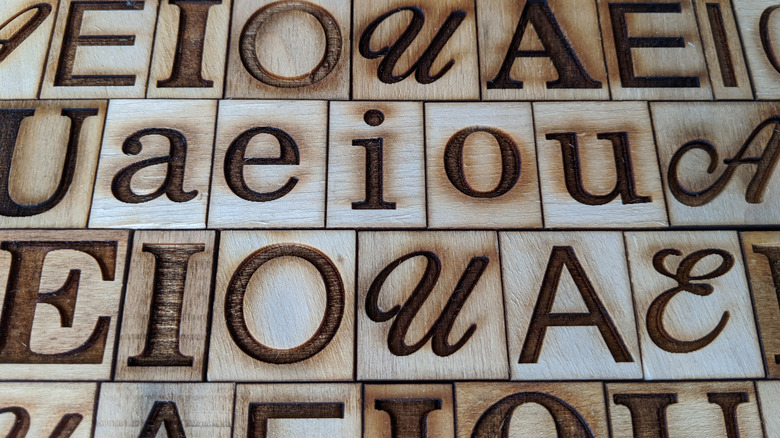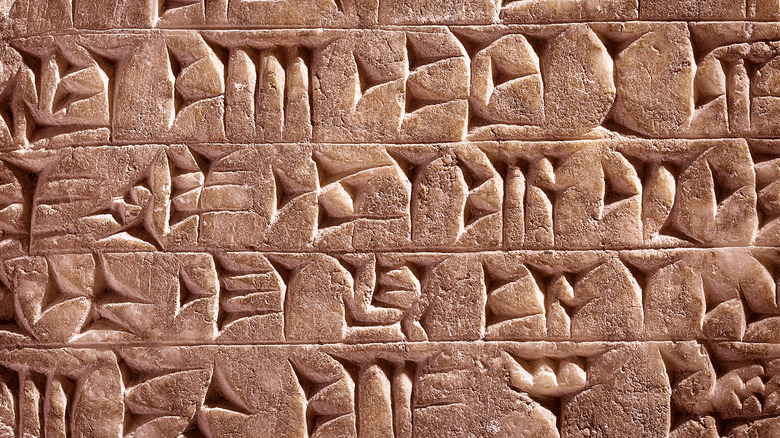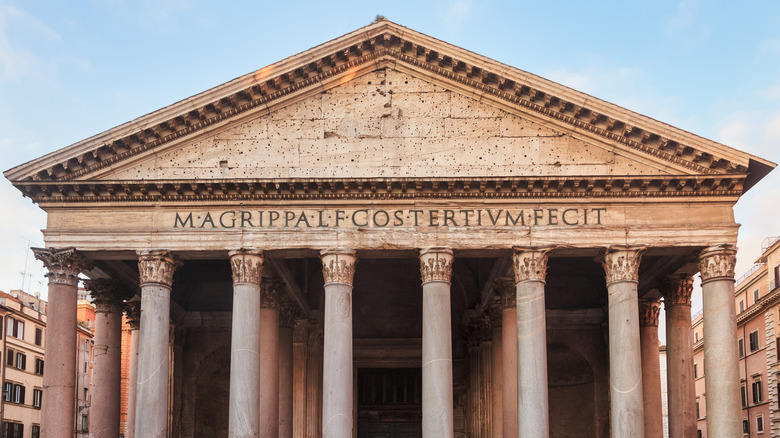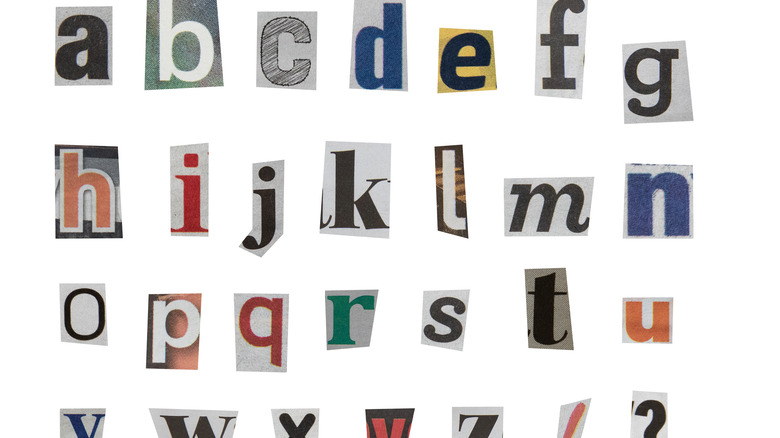The True Origins Of Uppercase And Lowercase Letters
At least 100 of the world's written languages use the Roman alphabet (or Latin alphabet), according to Learning Mole. For example, English — which is also the most-spoken language in the world (according to Berlitz), uses the script — as do all of the languages of Western and Northern Europe. Some local scripts may lean into the use of diacritical marks more than English, but even a language that has an alphabet filled with accent marks, such as French, still retains the Roman alphabet as its base script.
Other languages that never had a written alphabet until Westerners created one for them also use the Roman alphabet. After all, if you drive through Honolulu, while some of the words may be in the Hawai'ian language, the letters they're spelled with are Roman (missionaries in the early 1820s created the written Hawai'ian language with the Roman alphabet, as Hawai'i Life reports).
The Latin alphabet is more or less unique among all of the world's written languages, with two exceptions: it doesn't have upper- and lower-case letters. Languages utilizing the Cyrillic (Russian and Ukrainian, for example) and Greek alphabets also have upper and lower cases, but both of those alphabets share similarities with the Roman one (they all evolved from the Greek one, according to Britannica).
Written language was always all-caps
Our understanding of why the Roman alphabet has upper and lower cases begins with the evolution of written language itself. We humans have been on this Earth for 200,000 years, give or take, but we've only been writing stuff down for about the past 5,500 or so years, according to the British Library. And although writing emerged in places like China and the Indus Valley, for this article, we'll be focusing on the writing systems that emerged in the Mediterranean region. Specifically, the writing system that eventually evolved into the Latin alphabet emerged in Mesopotamia, in what is now modern-day Iraq. Within centuries, written language was spreading across the region, as laws were written and disseminated, workers' wages were recorded, trades were carried out, and so on. Needless to say, none of these languages used cases in their scripts.
As Britannica reports, it was via the script used by Phoenicians — and later the Etruscans, with some help from Greek — that the alphabet that would become that Latin one emerged, sometime before or around 600 B.C.
Latin was always all-caps, too
As mentioned above, what we know of as the Latin alphabet first emerged around 600 B.C., and it wasn't long before it was the dominant language used in and around the Mediterranean Sea (per Brigham Young University), eventually extending into almost all of the European continent. The Roman Empire used this language in trade, in publishing and in disseminating its laws, in its historical annals, and so on. To this day, you can walk through European cities — Rome in particular (pictured above) — and see millennia-old Latin inscriptions here or there. You may notice that the inscription on the building above is all-caps, and there's a reason for that: Latin was only ever all-caps. Letter cases wouldn't come until later.
Meanwhile, as Latin was spreading over Europe, so was a major cultural force: Christianity. It was the need to reproduce Christianity's book — the Bible – that eventually led to the dichotomy of uppercase and lowercase letters that we see today.
Copying, copying, and copying
For centuries, the only way to copy a text was to painstakingly do so by hand, making sure to not include any transcription errors, or else you had to start all over or hope no one noticed your mistake. It was this method of painstaking copying that, for centuries, was responsible for the dissemination of the Bible (and other Catholic Church documents) across Europe.
Copying a Bible by hand was a time-consuming and laborious task that took months (per My Modern Met). As it turns out, over the course of those centuries, the monks began to get sloppy (or more efficient, depending on your point of view) and write letters in a form of shorthand that involved more curves (curves being easier and faster to write than hard angles) and ditched bits that extended above or below the lines (per The Week).
By the time of Holy Roman Emperor Charlemagne, miniscule script (as lowercase script is officially called) and majuscule script (uppercase) were two separate things.
So why don't we write in all lowercase?
So if European scribes, painstakingly copying the Latin Bible (and other Catholic Church documents), developed a shorthand that made writing the letters easier, why are those two scripts still used centuries later? Long story short, sometimes there are situations where a big, attention-grabbing letter will do, such as at the top of a new page (you may have seen artwork depicting ancient manuscripts in which the first letter of the page occupies a good percentage of the space on the document) or when writing down the name of someone important (such as Jesus or Mary). In those instances, the scribes would resort to the older, more "formal" majuscule letters (per The Week).
You may have noticed how this practice informed how you write in Modern English. The rules for capital letters (at the beginning of a sentence, for example, or for use with proper nouns) may confuse elementary school children, but for centuries, we've basically been copying the methods of the ancient Christian scribes.
Why they're called cases
In 1439, according to My Modern Met, Johannes Gutenberg introduced an invention that changed the world forever: the printing press. Thanks to moveable type (which is to say, each letter/symbol on a block of wood or metal, placed in a frame to create the text), documents such as the Bible could be reprinted en masse orders of magnitude more quickly than the previous method of copying by hand.
Gutenberg and later printers would keep their blocks of letters and symbols, in various fonts and sizes, in wooden cases. Printers could easily grab the minuscule letters from a lower case and the majuscule ones from an upper case. It still took a few centuries for the phrases "lowercase" and "uppercase" to make their way to English — the first record of those terms being used comes from the 18th century — but today, the phrase has moved out of printers' workshops and into the overall vernacular.





